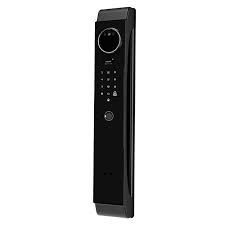
The Evolution of Security: Embracing the Era of Digital Locks
In the realm of security, the evolution of technology has ushered in a new era of innovation, offering solutions that marry convenience with robust protection. At the forefront of this evolution are digital locks, revolutionizing traditional locking mechanisms and reshaping how we safeguard our homes, offices, and beyond. Let’s delve into the realm of digital locks, exploring their features, benefits, and the transformative impact they bring to modern security systems.
The Rise of Digital Locks
Digital locks represent a paradigm shift in access control, leveraging cutting-edge technology to enhance security and streamline access management. Unlike conventional locks that rely on physical keys, digital locks employ electronic components such as keypads, biometric scanners, or wireless connectivity to authenticate users and grant access. This departure from traditional methods not only enhances security but also offers unparalleled convenience and flexibility.
Enhanced Security Features
One of the most compelling aspects of Digital Lock is their advanced security features. From PIN code entry to biometric authentication, digital locks provide multiple layers of protection against unauthorized access. Biometric scanners, for instance, analyze unique biological traits such as fingerprints or iris patterns, ensuring that only authorized individuals can gain entry. This eliminates the risks associated with lost or stolen keys, as access credentials are inherently tied to the user’s biometric data.
Moreover, many digital locks boast built-in encryption algorithms and tamper detection mechanisms, thwarting hacking attempts and unauthorized tampering. In addition, some models offer remote monitoring and alert functionalities, enabling users to receive real-time notifications of any suspicious activity or security breaches.
Convenience and Accessibility
Beyond security enhancements, digital locks offer unparalleled convenience and accessibility. Gone are the days of rummaging through pockets or purses in search of keys. With digital locks, gaining entry is as simple as entering a PIN code, scanning a fingerprint, or even using a smartphone app. This seamless access experience is particularly beneficial in environments where multiple individuals require entry, such as office buildings, hotels, or residential complexes.
Furthermore, digital locks can be integrated with smart home systems, allowing users to remotely control and monitor access to their properties from anywhere with an internet connection. Whether it’s granting temporary access to guests or monitoring the comings and goings of family members, digital locks provide unmatched flexibility and convenience.
Customizable Access Control
Another hallmark feature of digital locks is their customizable access control capabilities. Administrators can easily configure access permissions, granting or revoking access privileges as needed. Whether it’s assigning temporary access codes to contractors, restricting access to certain areas during specific times, or implementing user-specific access levels, digital locks offer unparalleled flexibility in access management.
This level of customization not only enhances security but also streamlines operations in commercial settings. Businesses can efficiently manage employee access, track attendance, and enforce security policies with minimal effort. Meanwhile, homeowners can grant temporary access to service providers or house guests without compromising the integrity of their security system.
Conclusion
As technology continues to advance, digital locks stand at the forefront of innovation, reshaping the landscape of access control and security. With their advanced security features, convenience, and customizable access control capabilities, digital locks offer a compelling solution for residential, commercial, and institutional applications. Embracing the era of digital locks represents not only a step forward in security but also a testament to the transformative power of technology in safeguarding our most valuable assets.